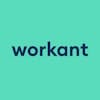Navigating the world of HR software can feel overwhelming with so many options available. Whether you’re a small business or a growing enterprise, picking the right platform is essential for smooth operations, employee satisfaction, and overall growth. But where do you start? Let’s break it down.
Understand Your Business Needs
Before diving into the features and pricing of different software options, it’s crucial to take a step back and assess what your business truly needs. Are you looking for solutions to streamline payroll and time tracking, or are you more focused on employee engagement and wellbeing?
Ask yourself:
📊 What are your current HR pain points?
🚀 How many employees need access to the system?
🧑💻 Are you planning to scale?
📱 Do you need mobile access for remote or on-the-go teams?
By identifying the key areas where HR processes can be improved, you’ll know which features to prioritize when evaluating software.
For a general guide on key HR challenges, check out HR Dive.
Explore how Workant’s Core HR Module can centralize all your HR needs.
Focus on Core Features
While it’s tempting to go for a solution with all the bells and whistles, focus on your core needs first. Here are a few must-have features to look out for:
📁 Employee Data Management: Keep all employee records centralized and easily accessible. Learn how Workant’s Employee Database can help.
⏱ Time Tracking & Attendance: Ensure accurate tracking of work hours, overtime, and absences. Discover Workant’s Time Tracking Software.
🌴 Leave & Absence Management: Simplify time-off requests and approvals. Check out Workant’s Leave Calendar.
🗓 Shift Planning: Manage schedules and adapt to last-minute changes with ease. See how Workant’s Shift Planning Module can streamline this process.
📊 HR Reporting & Analytics: Gain insight into employee trends, attendance, and performance.
For a deeper dive into HR feature requirements, consider Capterra’s Guide to HR Software Features.
Look for Integration Capabilities
Your HR software shouldn’t exist in a silo. Ensure that it integrates seamlessly with other tools you’re using, such as payroll, accounting, and communication platforms. The ability to sync with tools like Slack, QuickBooks, or payroll systems is essential for reducing manual data entry and avoiding errors.
Platforms like Workant allow for easy integration with various systems, ensuring that your data flows smoothly between all your business tools.
Learn more about integration-friendly HR platforms from TechRadar.
Prioritize Usability and Support
No matter how feature-rich a platform is, if it’s difficult for your team to use, it won’t serve its purpose. Usability should be at the forefront of your decision-making process. Look for HR software that offers:
🧠 Intuitive Interface: A clean, easy-to-navigate dashboard makes adoption faster for your HR team and employees.
📱 Mobile App Support: Many businesses operate in a hybrid or remote capacity, so mobile accessibility is a must. See Workant’s Mobile HR App for an example of seamless mobile support.
💬 Customer Support: Look for platforms offering 24/7 customer support or dedicated account management to help with onboarding and any issues that arise.
For insights on the importance of usability, consult PCMag’s HR Software Guide.
Flexibility and Scalability
Your business is constantly evolving, and your HR software should be able to grow alongside you. Opt for solutions that allow you to add or remove features based on your business needs. Many platforms offer modular pricing, so you only pay for the features you use.
Workant provides a modular approach where you can scale your tools as your team expands, giving you ultimate flexibility. Start with Core HR, then add modules like Shift Planning or Employee Wellbeing Surveys as needed.
Consider Total Cost of Ownership
Finally, while price is always a consideration, it’s important to think about the total cost of ownership. Hidden costs such as setup fees, additional training, or complex integrations can add up over time. Instead, opt for transparent pricing models that give you full visibility into your costs.
Workant’s pricing is clear, with no hidden fees. You know exactly what you’re paying for, making it easier to budget as your business grows.
For more on total cost considerations, check out HR Tech Weekly’s insights into avoiding hidden costs in HR software.
Conclusion
Choosing the right HR software can significantly impact your business efficiency and employee satisfaction. By focusing on your core needs, usability, integration capabilities, and cost, you can find a solution that not only meets your current requirements but grows with you. If you’re ready to streamline your HR processes, try Workant for free today.

